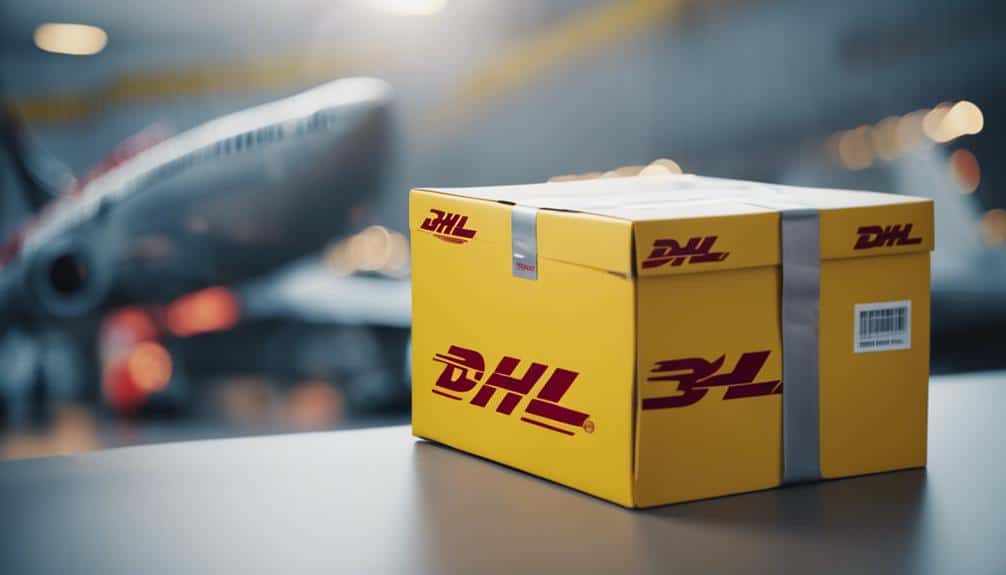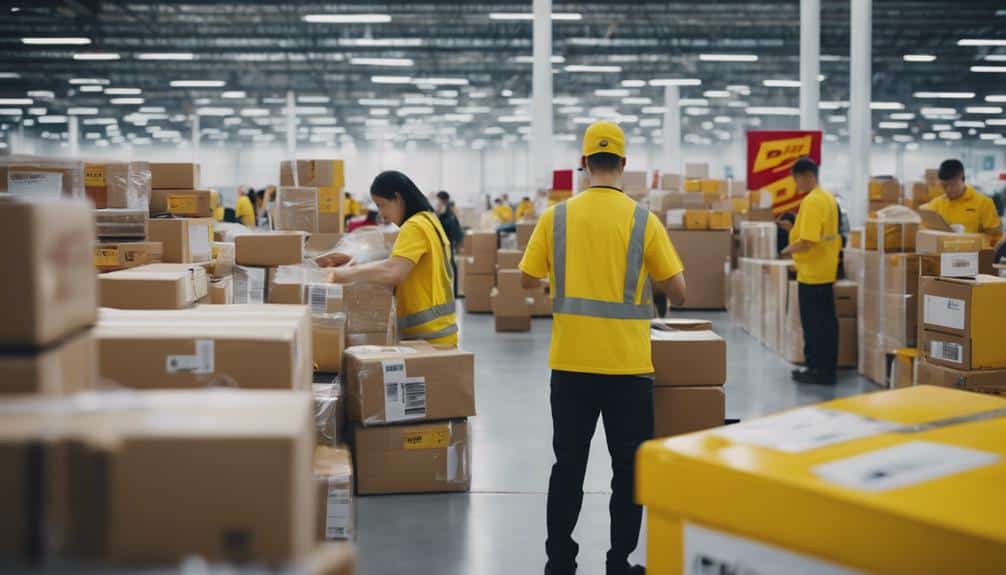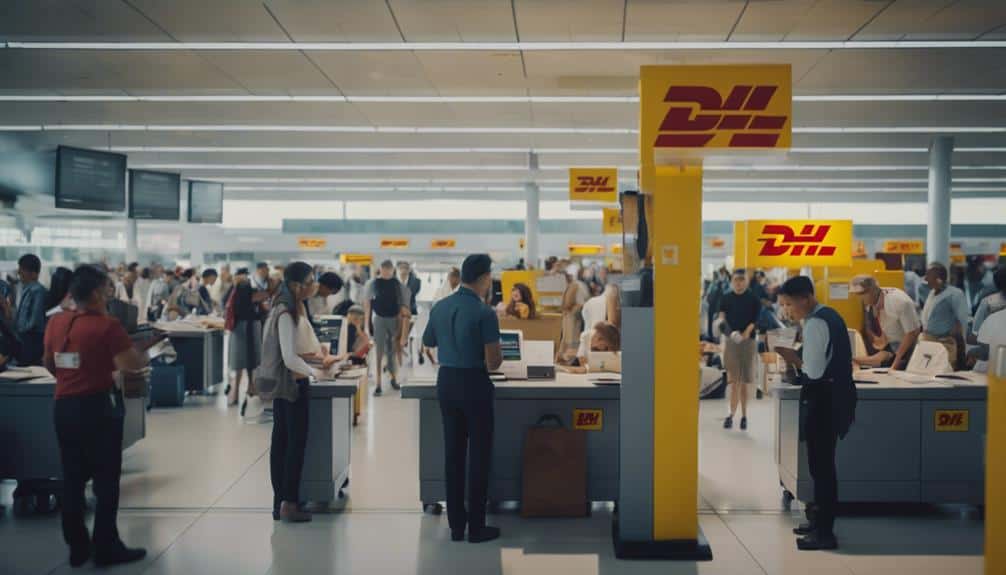Understanding DHL clearance events is vital for smooth international shipments. Compliance with customs regulations guarantees timely delivery by preventing clearance delays. Factors such as customs workload and inaccurate paperwork can impact clearance duration. Real-time tracking tools provide insights into the status of your shipment during the clearance process. Effective clearance management involves strategic planning and communication with customs authorities. Proper documentation and adherence to regulations are essential for successful clearances. For more in-depth insights into DHL clearance events, make sure you grasp the importance of documentation accuracy, shipping strategies, and access to support and contact information for seamless shipment management.
Key Takeaways
- Regular monitoring of DHL tracking tools for clearance event alerts is crucial.
- Understanding customs procedures aids in managing potential delays.
- Accurate documentation and compliance speed up customs clearance processes.
- High customs workload during peak times can extend clearance durations.
Importance of DHL Clearance Events

Understanding the significance of DHL clearance events is essential for ensuring the efficient processing and delivery of international shipments.
Compliance with customs regulations is vital to avoid shipment delays caused by incomplete or inaccurate paperwork. Customs duties may be levied on high-value shipments, necessitating careful attention to detail in documentation.
Missing or erroneous paperwork can trigger additional clearance processing, further prolonging the shipment process. Delays may also arise from customs office backlogs or staffing issues beyond DHL's control.
As a result, a thorough understanding of customs procedures and regulations is imperative to navigate the clearance process smoothly and minimize any potential disruptions to the timely delivery of international shipments.
Duration and Impact Factors
The duration and impact of clearance events on international shipments vary considerably based on customs workload, backlogs, and other influencing factors.
Customs delays can range from hours to weeks, with clearance procedures affected by the volume of shipments, staffing levels, and regulatory requirements. High customs workload during peak times can lead to longer processing times, while missing or inaccurate paperwork necessitates re-submission, further extending clearance duration.
Language barriers in documentation can also contribute to delays in the clearance process.
It is essential to anticipate potential clearance timelines and be prepared for unforeseen delays beyond DHL's control. Understanding these factors can help manage expectations and facilitate smoother customs clearance for international shipments.
Tracking and Status Updates

One key aspect to monitor during the customs clearance process for international shipments is the tracking and status updates provided by DHL. Tracking challenges can arise due to the complexity of customs procedures, making it essential to stay informed through status notifications.
Here are important points to take into account:
- Real-time Monitoring: Utilize DHL's tracking tools to stay updated on the progress of your shipment through customs.
- Clearance Event Alerts: Be attentive to notifications indicating when your package enters the clearance process.
- Delivery Date Adjustments: Understand that clearance duration may impact expected delivery dates, necessitating flexibility.
- Insightful Updates: Tracking messages offer valuable insights into the customs clearance status, providing transparency throughout the process.
Effective Clearance Management
Regularly monitoring and promptly addressing DHL clearance events is vital for efficient international shipment management.
Effective clearance management involves implementing strategic clearance strategies to navigate potential customs challenges. Proactively addressing customs challenges can help streamline the clearance process and minimize delays.
Utilizing proper documentation and adhering to customs regulations are key components of successful clearance management. Clear communication with customs authorities and timely responses to any inquiries can expedite the clearance process.
Understanding the nuances of different customs requirements and potential triggers for additional clearance processing is important in developing effective clearance management strategies.
Shipping and Mailing Insights

Monitoring and optimizing shipping and mailing processes requires an extensive understanding of international logistics and regulatory requirements.
Here are four essential tips and best practices to enhance your shipping and mailing operations:
- Utilize Proper Packaging: Confirm items are securely packaged to prevent damage during transit.
- Accurate Address Labeling: Double-check addresses to avoid delivery errors and delays.
- Track Shipments: Regularly monitor tracking information to stay updated on the delivery status.
- Choose Appropriate Shipping Methods: Select services that align with delivery timeframes and budget constraints.
Compliance and Documentation Requirements
What are the essential compliance and documentation requirements for ensuring successful international shipments?
Compliance challenges in international shipping necessitate meticulous attention to documentation accuracy. Ensuring that all customs paperwork is complete and error-free is vital to avoiding delays in the clearance process.
Inaccuracies or missing information can lead to additional scrutiny and potential hold-ups at customs checkpoints. Addressing compliance challenges proactively by double-checking all documentation for accuracy can help expedite the clearance process and prevent unnecessary setbacks.
Adhering to regulations and providing precise documentation not only facilitates smooth customs clearance but also contributes to the timely delivery of international shipments.
Support and Contact Information

Ensuring a smooth handling of international shipments involves understanding the support and contact information available for addressing any queries or concerns that may arise during the shipping process.
- Customer Service: DHL offers 24/7 customer service assistance for any shipping-related inquiries or issues.
- Contact Methods: Reach DHL customer service via phone, email, or online chat for quick responses.
- Online Resources: Utilize DHL's website for FAQs, guides, and tracking tools to self-manage shipments.
- Escalation Procedures: In case of unresolved issues, DHL provides escalation channels for further assistance and issue resolution.
Conclusion
In summary, maneuvering through DHL clearance events is akin to charting a course through a complex labyrinth of regulations and procedures.
Understanding the intricacies of customs clearance is essential to guarantee the smooth and timely delivery of international shipments.
Like skilled navigators, businesses must steer their way through the challenges of customs documentation and compliance to reach the shores of successful cross-border shipping.

Oliver Postman was born and raised in a small town in the Midwest, where his fascination with postage began at an early age. At just six years old, he stumbled upon a box of old stamps in his grandfather’s attic, igniting a passion that would shape his life.

